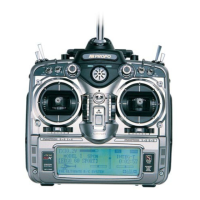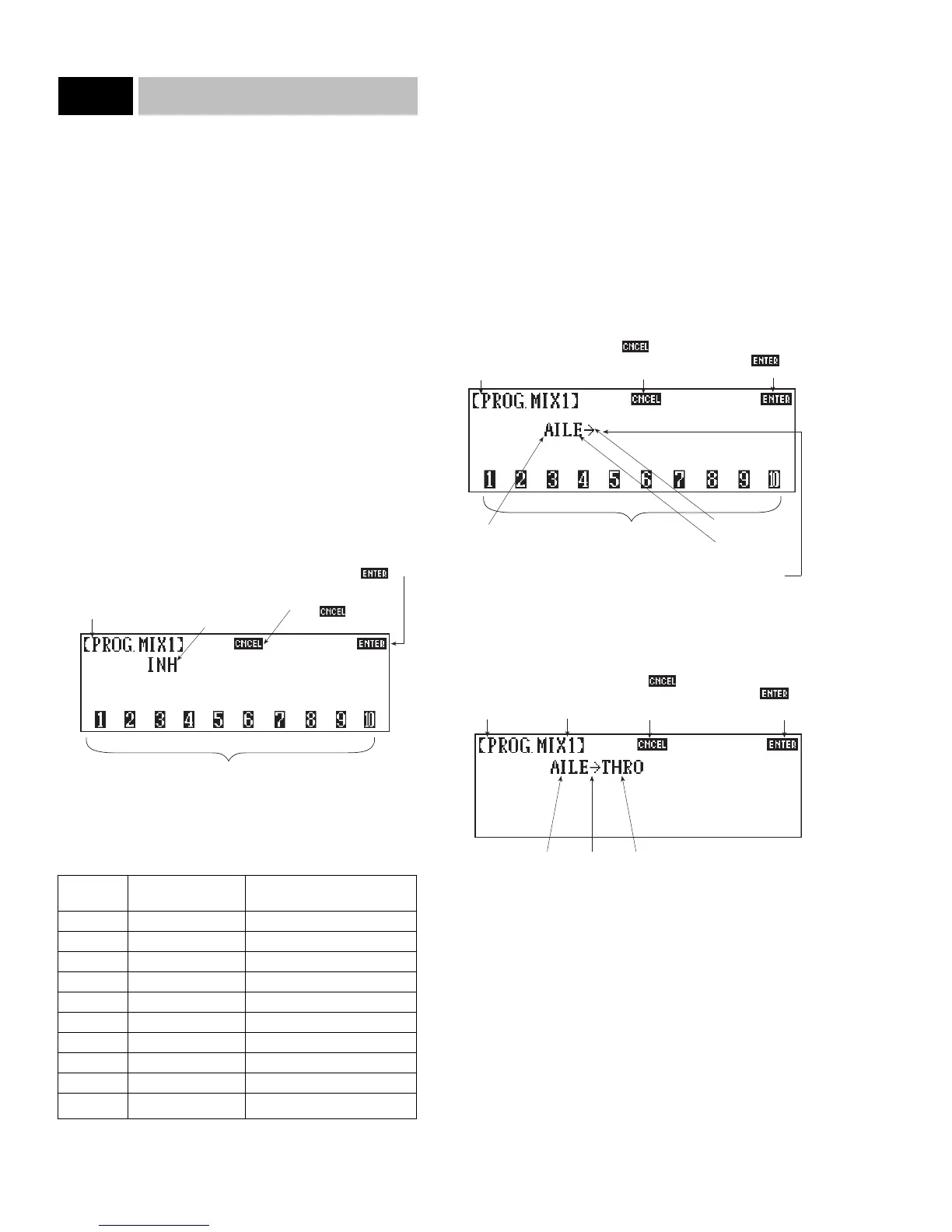Standard Programmable Mixing
The 10X provides five standard programmable mixes.
Programmable mixes are used whenever the pilot wants a chan-
nel/servo to react or move as a result of providing input to anoth-
er channel. The channel that reacts is called the Slave channel,
while the channel that receives direct input is called the Master
channel. Under this concept, when the pilot provides an input to
the Master channel, the transmitter automatically generates an
input for the Slave channel/servo so that it moves in a specified
direction for a specified amount.
Mixes are programmable, allowing any of the 10 channels to be
Master, Slave or both. The offset (mix neutral point), direction
and travel can all be programmed and adjusted.
Accessing and Utilizing the Standard
Programmable Mixing Function
To access the Programmable Mixing function, enter the proper
code, 51-55, in the code number access selection or use the direct
mode method. The screen will appear as follows:
Each channel of your transmitter and receiver has been assigned a
number for identification purposes. Use the following chart to
identify the channel and its identification number.
The first number key you select becomes the Master channel. It
also activates the mix feature. The Master channel is the channel
from which you want to mix. In other words, this is the control-
ling channel for the mixing feature.
The second number key selected becomes the Slave channel. The
Slave channel is the channel that is being mixed into the Master
channel. You can also think of it as the controlled channel for the
mixing feature.
For example, you want to mix the aileron channel to the throttle
channel. Aileron is the Master, or controlling, channel. Throttle is
the Slave, or controlled, channel. The initial screen shows that the
mixing feature is inhibited. However, after aileron is selected the
screen will appear as follows:
Next, choose the Slave channel—in our example, throttle. The
screen will now change to display:
Note: Once both the Master and Slave channels have been
selected, the channel numbers are removed from the bottom of the
screen. If you have mistakenly entered a wrong channel number
for either the Master or the Slave channels, touch the CANCEL
key and reprogram the mixing channels.
42
10X MANUAL Airplane
8.13
Code 51-55

